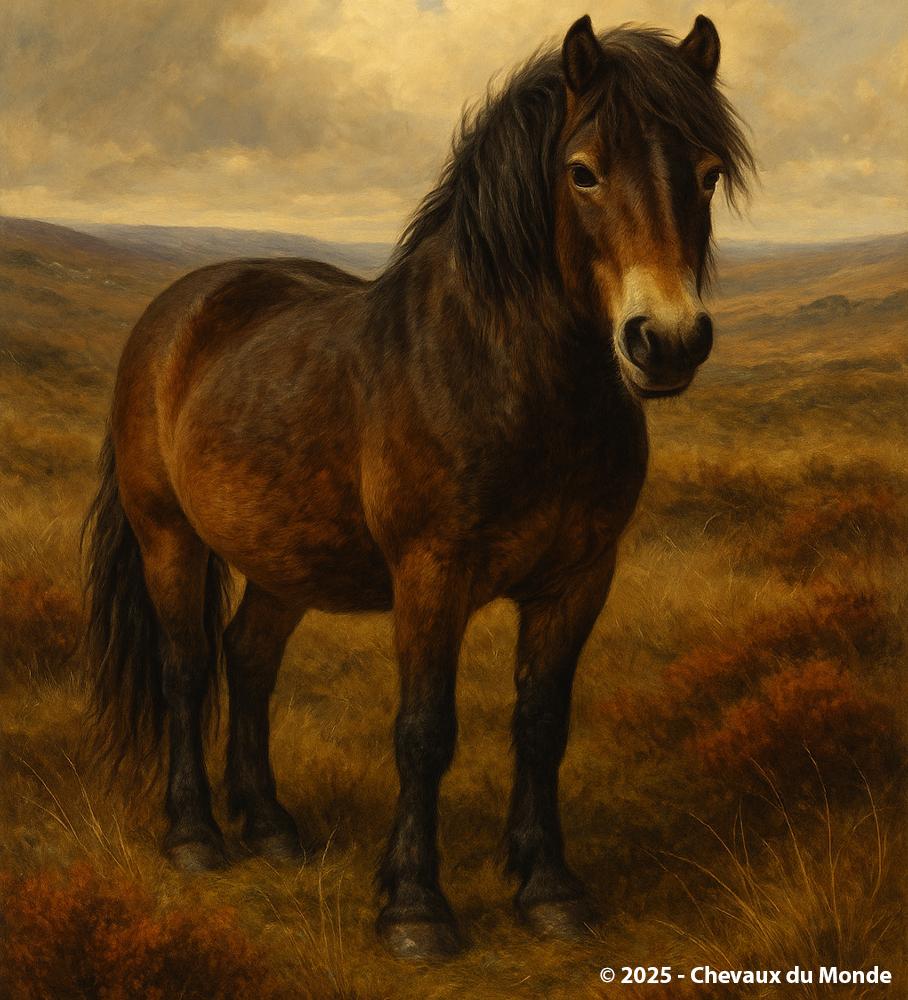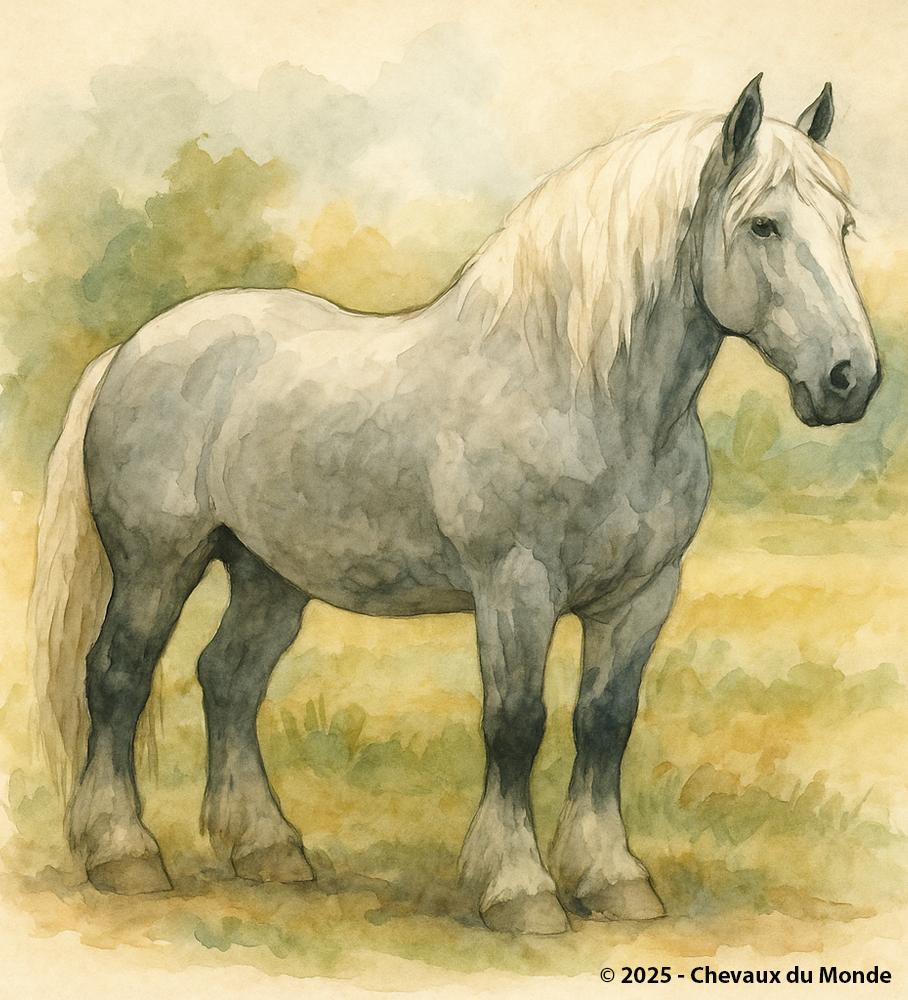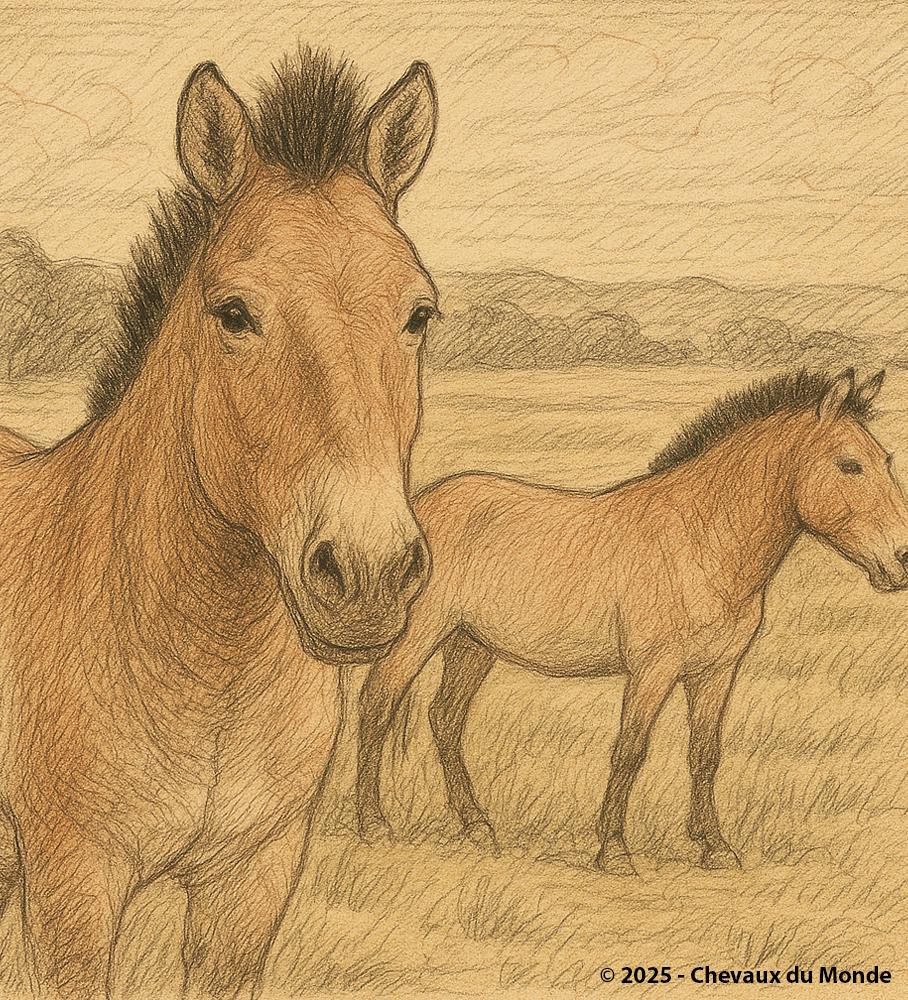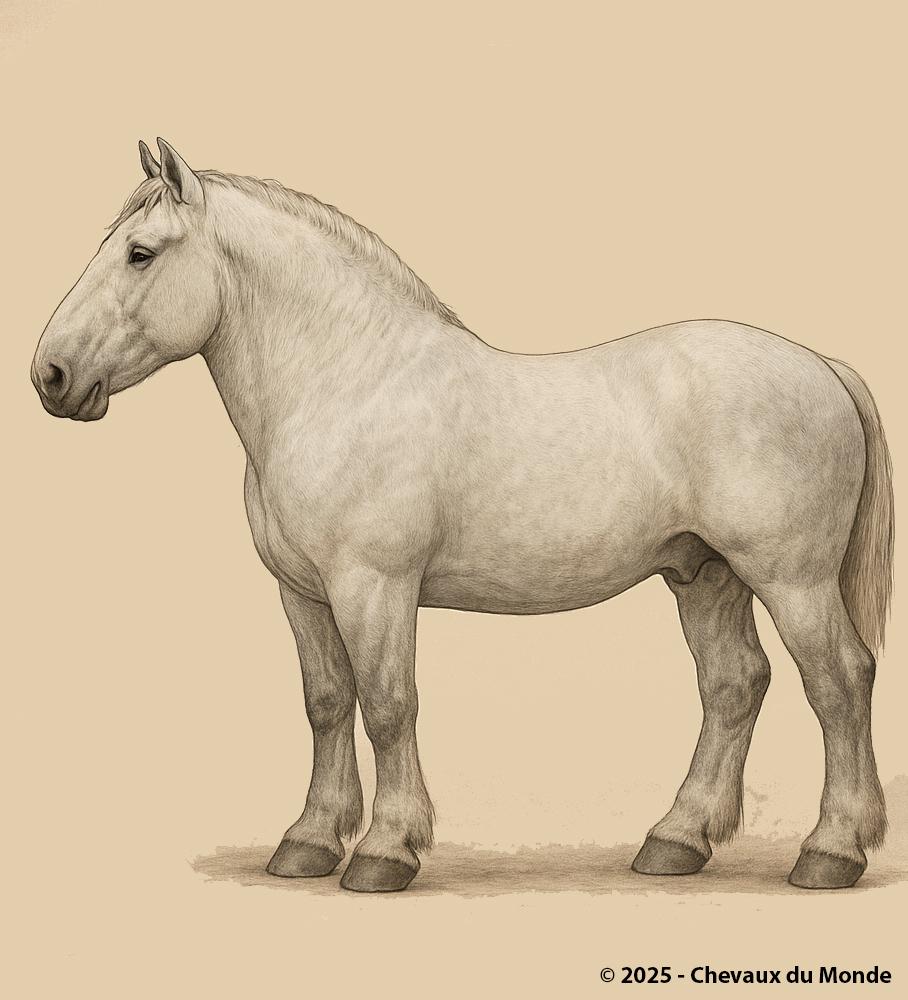INTERNATIONAL EFFORTS TO PROTECT THE EXMOOR PONY

Guardian of the moors: the Exmoor pony, one of Europe’s oldest breeds, is protected through international efforts to preserve its ancestral hardiness.
A Primitive Breed at the Heart of Conservation Programs
A unique genetic heritage
The Exmoor Pony is considered one of the oldest and most primitive horse breeds in Europe. Native to the southwest of England, in the Devon and Somerset regions, it has developed over thousands of years in a harsh and isolated environment. This natural evolution has given it unique morphological traits: a “mealy” muzzle, a dense coat to withstand severe weather, and remarkable hardiness.
This genetic heritage, largely preserved from crossbreeding, makes the Exmoor Pony a key element of global equine biodiversity.
A critically endangered breed
Despite its importance, the Exmoor Pony suffered a dramatic decline in the 20th century. During World War II, many semi-wild herds were decimated, drastically reducing the population. In the 1940s, fewer than fifty purebred individuals remained. Even today, the breed is still threatened, with about 2,000 individuals worldwide, only half of which are considered purebred.
The studbook, established in 1921, sets strict rules to prevent excessive inbreeding and to safeguard the authenticity of bloodlines.
British conservation programs
In the United Kingdom, several associations and organizations are actively working to protect the breed:
- The Exmoor Pony Society (EPS), founded in 1921, manages the official studbook and ensures compliance with the breed standard.
- Reintroduction programs are conducted in Exmoor’s moorlands and other British reserves, where the ponies play a crucial role in landscape and ecosystem management.
- Educational initiatives aim to raise awareness and promote the role of the Exmoor Pony in local cultural heritage.
International recognition and support
Beyond the United Kingdom, several countries are also committed to preserving the breed:
- In Germany, France, and the Netherlands, dedicated breeders maintain small herds, often used for ecological management of nature reserves.
- The Exmoor Pony is listed as an endangered breed by the Rare Breeds Survival Trust (RBST) and the FAO (Food and Agriculture Organization of the United Nations).
- International cooperation allows the exchange of breeding stock and strengthens genetic diversity.
The ecological role of Exmoor Ponies
These hardy ponies are involved in rewilding projects, where their grazing helps maintain open landscapes and promotes plant and animal biodiversity. Their presence prevents scrub encroachment, preserves moorlands, wetlands, and natural meadows, and restores an ecological balance that other domestic herbivores cannot achieve.
Future prospects
Thanks to these conservation efforts, the breed has regained some stability, but its future remains fragile. The keys to success lie in:
- Maintaining a diverse genetic pool,
- Increasing the number of breeding animals,
- And continuing international cooperation.
Today, the Exmoor Pony is recognized as a living symbol of Europe’s primitive wildlife and as an essential ecological actor in landscape conservation.
👉 View the [Exmoor Pony]



